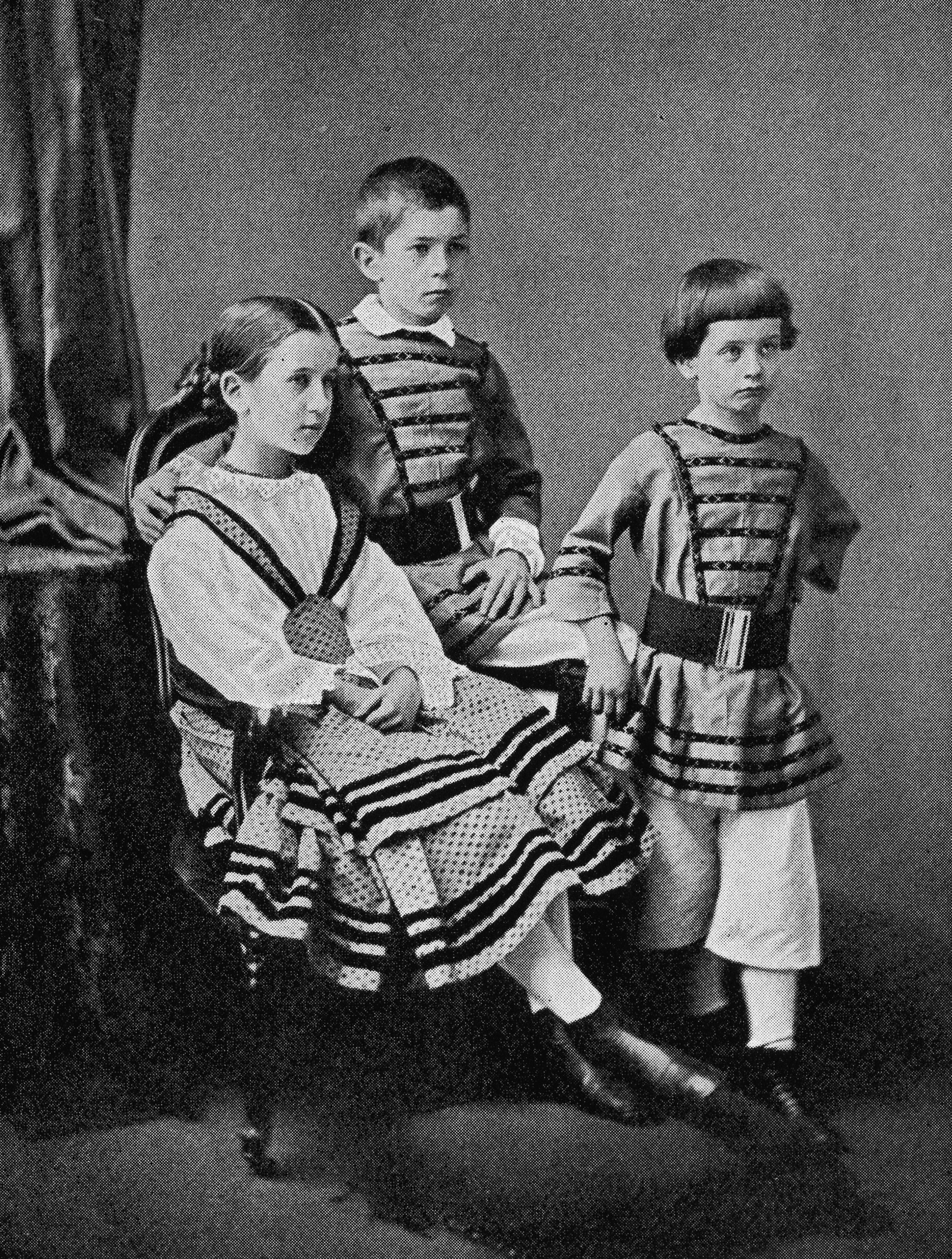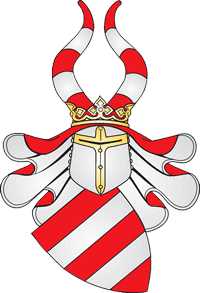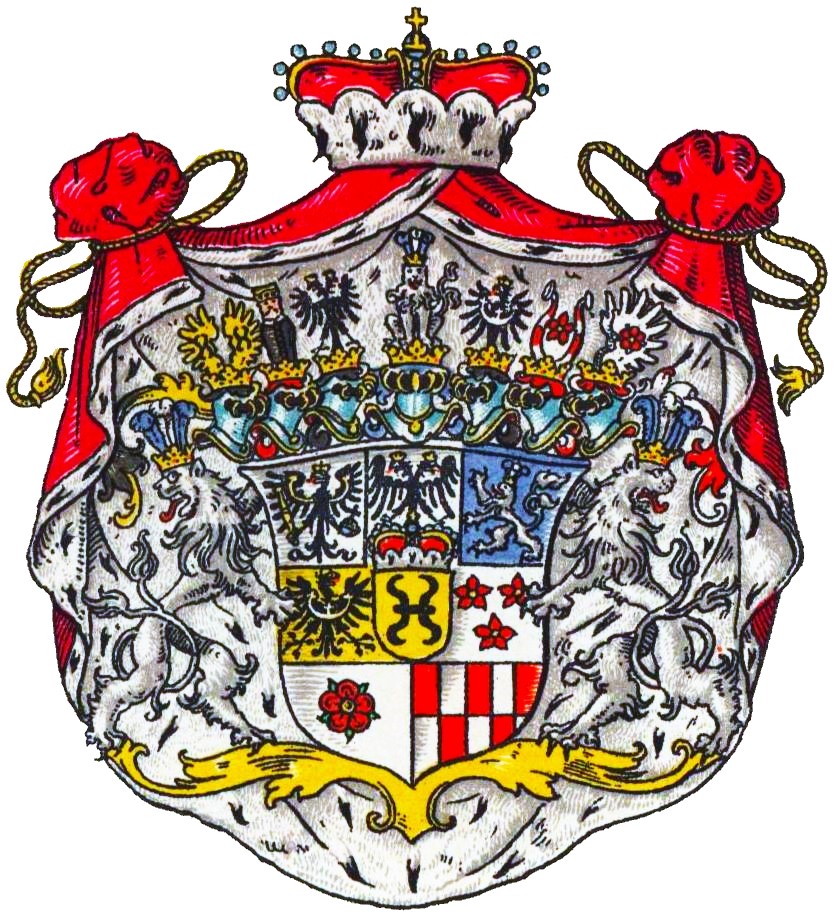|
Johanna Von Puttkamer
Johanna, Princess of Bismarck, Duchess of Lauenburg (born Johanna Friederike Charlotte Dorothea Eleonore von Puttkamer; 11 April 1824 – 27 November 1894) was a Kingdom of Prussia, Prussian and German Empire, German noblewoman and the wife of the 1st Chancellor of Germany, Otto von Bismarck. Early life She was born at Wiatrołom, Viartlum manor near Miastko, Rummelsburg in the Prussian Province of Pomerania (1815–1945), Province of Pomerania (present-day Wiatrołom, Poland), the daughter of Heinrich von Puttkamer (1789–1871) and his wife, Luitgarde Agnes von Glasenapp (1799–1863). Her ancestors of the Puttkamer, Puttkamer family, first mentioned in the 13th century, belonged to the circle of ''Uradel'' families of Farther Pomerania and were known for their devoted pietism.Encyclopædia Britannica, 2009 Johanna grew up in neighbouring Reinfeld palace (Barnowiec), which her father acquired shortly after her birth. Life Johanna met Otto von Bismarck, then owner of Kniephof ... [...More Info...] [...Related Items...] OR: [Wikipedia] [Google] [Baidu] |
Wiatrołom
Wiatrołom (, ) is a village in Gmina Miastko, Bytów County, Pomeranian Voivodeship, in northern Poland. It lies approximately west of Bytów and south-west of Gdańsk (capital city of the Pomeranian Voivodeship). From 1975 to 1998 the village was in Słupsk Voivodeship. Notable people * Johanna von Puttkammer (1824–1894) a Prussian noblewoman and the wife of the 1st Chancellor of Germany, Otto von Bismarck. References *Map of the Gmina Miastko Villages in Bytów County {{Bytów-geo-stub ... [...More Info...] [...Related Items...] OR: [Wikipedia] [Google] [Baidu] |
Nikolay Alexeyevich Orlov
Nikolay Alekseyevich Orlov (; April 27, 1827 — March 17, 1885) was a Russian nobleman, soldier, social reformer and diplomat. He started his career as an officer in the Russian army, and later served variously as the Russian ambassador to Belgium, Great Britain, France, the Austro-Hungarian Empire, and Germany. He was primarily responsible for the end of corporal punishment under Russian law. Orlov was born in St. Petersburg to Prince, then Count, Alexey Fyodorovich Orlov and his wife Olga Alexandrovna (nee Zherebtsova). He studied law, and in 1843, he became a page at the Russian Imperial Court. In 1845, he was assigned to the Life Guard Horse Regiment. In 1846, he was attached to the staff of Grand Duke Konstantin Nikolayevich, the Tzar's son. In 1849, he distinguished himself in the suppression of the 1848 Hungarian uprising, and was promoted to captain. From 1851 to 1854 he served on the General Staff and in the War Ministry. Promoted to colonel, he was sent to the ... [...More Info...] [...Related Items...] OR: [Wikipedia] [Google] [Baidu] |
Russian Empire
The Russian Empire was an empire that spanned most of northern Eurasia from its establishment in November 1721 until the proclamation of the Russian Republic in September 1917. At its height in the late 19th century, it covered about , roughly one-sixth of the world's landmass, making it the list of largest empires, third-largest empire in history, behind only the British Empire, British and Mongol Empire, Mongol empires. It also Russian colonization of North America, colonized Alaska between 1799 and 1867. The empire's 1897 census, the only one it conducted, found a population of 125.6 million with considerable ethnic, linguistic, religious, and socioeconomic diversity. From the 10th to 17th centuries, the Russians had been ruled by a noble class known as the boyars, above whom was the tsar, an absolute monarch. The groundwork of the Russian Empire was laid by Ivan III (), who greatly expanded his domain, established a centralized Russian national state, and secured inde ... [...More Info...] [...Related Items...] OR: [Wikipedia] [Google] [Baidu] |
Trubetskoy
The House of Trubetskoy, (; ; ; Ruthenian: ''Trubetsky''; ; ; ; ; ; ) is a Russian gentry family of Ruthenian stock and Lithuanian origin, like many other princely houses of Grand Duchy of Lithuania, later prominent in Russian history, science, and arts. They are descended from Algirdas's son Demetrius I Starshy (1327 – 12 August 1399). They used the Pogoń Litewska coat of arms and the Trubetsky coat of arms. Sovereign rule Princes Troubetzkoy descend from Demetrius I Starshy, one of Algirdas's sons, who ruled the towns of Bryansk and Starodub. He was killed together with his elder sons in the Battle of the Vorskla River (1399). Demetrius's descendants continued to rule the town of Trubetsk (Troubchevsk) until the 1530s, when they had to convert to Roman Catholicism or leave their patrimony and settle in Moscow. They chose the latter, and were accepted with great ceremony at the court of Vasili III of Russia. Time of Troubles Undoubtedly, the most prominent of early ... [...More Info...] [...Related Items...] OR: [Wikipedia] [Google] [Baidu] |
Orlov Family
The House of Orlov () is the name of a Russian noble family which produced several distinguished statesmen, scientists, diplomats, and soldiers. The family first gained distinction in the 18th century through the achievements of five Orlov brothers, of whom the second eldest was Catherine the Great's paramour, and two younger brothers were notable military commanders. Orlov brothers Grigory Grigoryevich Orlov Count Grigory Grigoryevich Orlov (1734–1783), who created for his family such an illustrious Russian history, was the son of Gregory Orlov, governor of Great Novgorod. He was educated in the corps of cadets at St Petersburg, began his military career in the Seven Years' War, and was wounded at Zorndorf. While serving in the capital as an artillery officer he caught the fancy of Grand Duchess Catherine Alekseyevna, and was the leader of the conspiracy which resulted in the dethronement and death of her husband Peter III (1762). After the event, Catherine raised h ... [...More Info...] [...Related Items...] OR: [Wikipedia] [Google] [Baidu] |
Arnim Family
The House of Arnim is the name of an ancient German noble family, originally from Altmark, part of the mediaeval March of Brandenburg. Members of the family occupied many important positions within Holy Roman Empire, Electorate of Saxony, Saxony, Kingdom of Prussia, Prussia, German Empire and the German Reich. History They are one of the oldest extant Prussian noble families, being first attested to in 1204. On 2 October 1786, one branch of the family was raised to the title of Count in Kingdom of Prussia, Prussia by Frederick William II of Prussia, King Frederick William II, while a second branch was raised to the same title in 1870 by William I, German Emperor, King William I of Prussia. The Count von Arnim-Boitzenburg was one of the hereditary members of the Prussian House of Lords from 1852-1918, when it was dissolved. Numerous branches of the family still exist today. Perhaps the most famous member of the family was the novelist, Countess Elizabeth von Arnim, Elizabeth von ... [...More Info...] [...Related Items...] OR: [Wikipedia] [Google] [Baidu] |
Hoyos Family
The House of Hoyos is a prominent Austrian noble family of an ancient Castilian origin, whose members held significant political positions during the Austro-Hungarian and the German Empire. History It derives its name from El Hoyo de Pinares in Ávila, Castile and León, and can be traced back to the 9th century. Juan de Hoyos and his family accompanied the later Ferdinand I, Holy Roman Emperor, to Lower Austria in 1525, founding the Austrian branch of the family. This branch rose to prominence in Austria and in Hungary as Hungarian magnates over the centuries. Johann Baptist von Hoyos (1506-1579) was awarded with the title of Imperial Baron in 1549. His two sons, elder Ferdinand Albrecht Freiherr Hoyos von Stichsenstein (1533-1609) and younger Ludwig Hoyos Freiherr Hoyos von Stichsenstein (1550-1600) formed two branches of the family. Members of the elder line of the family were elevated to the rank of Imperial counts in 1682 and survived until today. Members of the young ... [...More Info...] [...Related Items...] OR: [Wikipedia] [Google] [Baidu] |
House Of Hatzfeld
The House of Hatzfeld, also spelled House of Hatzfeldt, is the name of an ancient and influential German nobility, German noble family, whose members played important roles in the history of the Holy Roman Empire, Kingdom of Prussia, Prussia and Austro-Hungarian Empire, Austria. History They belonged to high nobility originally from Hesse. The family is first mentioned in 1138 and has its ancestral seat in Hatzfeld. In 1418 the family inherited Wildenburg Castle near Friesenhagen, a Lordship with Imperial immediacy, from the Lords of Wildenburg. Titles Melchior von Hatzfeld (1593–1658), Imperial field marshal in the Thirty Years' War, became the first Count in 1635. He was enfeoffed with Żmigród, Trachenberg Castle in Silesia in 1641, and Gleichen Castle with the town of Wandersleben in Thuringia in 1651. Franz Phillip Adrian became the first Prussian Fürst (''Prince of Hatzfeld-Gleichen-Trachenberg'') in 1741 (the branch extinguished in 1794). The ''Hatzfeldt-Werther-Sch ... [...More Info...] [...Related Items...] OR: [Wikipedia] [Google] [Baidu] |
Imperial County Of Rantzau
Imperial is that which relates to an empire, emperor/empress, or imperialism. Imperial or The Imperial may also refer to: Places United States * Imperial, California * Imperial, Missouri * Imperial, Nebraska * Imperial, Pennsylvania * Imperial, Texas * Imperial, West Virginia * Imperial, Virginia * Imperial County, California * Imperial Valley, California * Imperial Beach, California Elsewhere * Imperial (Madrid), an administrative neighborhood in Spain * Imperial, Saskatchewan, a town in Canada Buildings * Imperial Apartments, a building in Brooklyn, New York * Imperial City, Huế, a palace in Huế, Vietnam * Imperial Palace (other) * Imperial Towers, a group of lighthouses on Lake Huron, Canada * The Imperial (Mumbai), a skyscraper apartment complex in India * Imperial War Museum, a British military museum and organisation based in London, UK * * Imperial War Museum Duxford, an aviation museum in Cambridgeshire, UK * * Imperial War Museum Nort ... [...More Info...] [...Related Items...] OR: [Wikipedia] [Google] [Baidu] |
Imperial Count
Imperial Count (, ) was a title in the Holy Roman Empire. During the medieval era, it was used exclusively to designate the holder of an imperial county, that is, a fief held directly ( immediately) from the emperor, rather than from a prince who was a vassal of the emperor or of another sovereign, such as a duke or prince-elector. These imperial counts sat on one of the four "benches" of ''Counts'', whereat each exercised a fractional vote in the Imperial Diet until 1806. Imperial counts rank above counts elevated by lesser sovereigns. In the post–Middle Ages era, anyone granted the title of ''Count'' by the emperor in his specific capacity as ruler of the Holy Roman Empire (rather than, e.g. as ruler of Austria, Bohemia, Hungary, the Spanish Netherlands, etc.) became, ''ipso facto'', an "Imperial Count" (''Reichsgraf''), whether he reigned over an immediate county or not. Origins In the Merovingian and Franconian Empire, a ''Graf'' ("Count") was an official who exerci ... [...More Info...] [...Related Items...] OR: [Wikipedia] [Google] [Baidu] |






